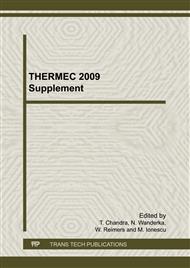p.503
p.509
p.515
p.521
p.527
p.533
p.539
p.545
p.551
Finding the Optimum Cutting Conditions for Face Milling 13% Manganese Steel Using the Taguchi Design Method and Predictive Equations
Abstract:
In this paper, a methodology for determining the optimum machining parameters for a face mill operation is presented. Taguchi design of experiments was used in company with orthogonal arrays in order to study the effects and interactions that selected parameters had on the cutting behaviour. The parameters that were included in the study were cutting speed, feed rate, depth of cut and the effects of cutting fluid. Using the orthogonal array experimental runs were set up and carried out on specimens of metal plate on a CNC milling centre. The studied material was 13% Austenitic Manganese Steel. The response factors for the experimental runs were surface finish, spindle load, material removal rate, cutting forces and surface hardness. From the results and using the orthogonal arrays a set of empirical models were derived for each response factor which could be used to predict the optimal controllable factor settings for a given production criteria.
Info:
Periodical:
Pages:
527-532
Citation:
Online since:
January 2010
Authors:
Keywords:
Price:
Сopyright:
© 2010 Trans Tech Publications Ltd. All Rights Reserved
Share:
Citation:


